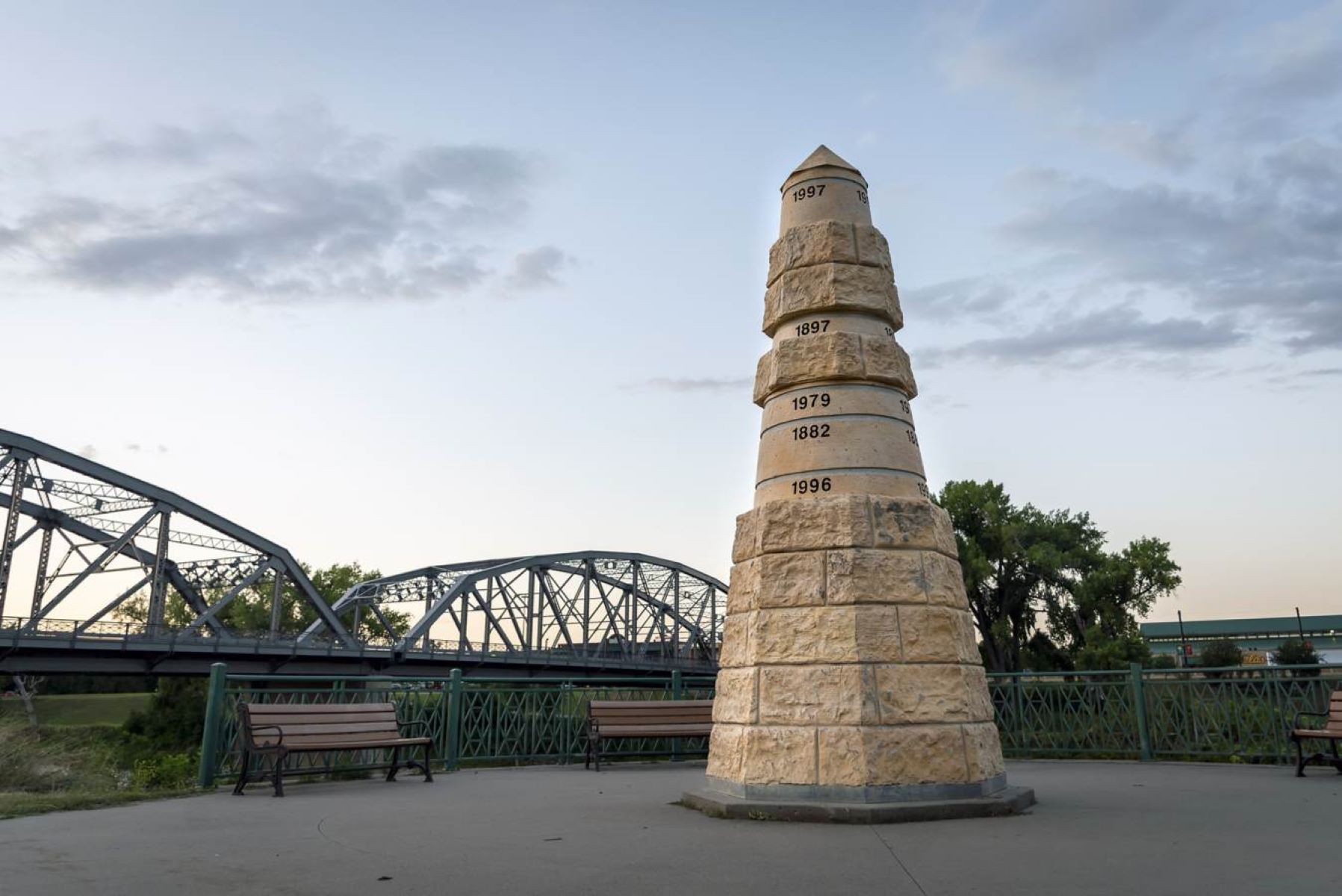Unveil The History At Grand Forks’ Flood Memorial Monument

Ever wondered about the history behind Grand Forks' Flood Memorial Monument? Located in North Dakota, this site tells a powerful story of resilience. The Flood Memorial Monument commemorates the devastating 1997 Red River flood that changed the lives of many residents. Visiting this monument offers a glimpse into the community's spirit and determination to rebuild. It's not just a piece of history; it's a symbol of hope and strength. Whether you're a history buff or just curious, this landmark provides a meaningful experience. Come and see how Grand Forks turned a disaster into a testament of human endurance.
Unveil the History at Grand Forks' Flood Memorial Monument
Grand Forks, North Dakota, has a rich history shaped by the Red River. The Flood Memorial Monument stands as a testament to the city's resilience and spirit. This guide will take you through the key places and events commemorated by this monument.
The Great Flood of 1997
The Flood Memorial Monument prominently features the Great Flood of 1997. This catastrophic event reshaped the city and its community.
Red River Crest: The monument marks the highest crest of the Red River during the flood. It reached an astonishing 54 feet, causing widespread devastation.
Evacuation Route: Learn about the evacuation routes used by residents. The monument details how thousands of people were safely evacuated, showcasing the community's unity.
Floodwall Construction: Discover the story behind the construction of the floodwall. Built to prevent future disasters, this wall stands as a symbol of hope and protection.
Historical Floods Before 1997
While the 1997 flood was significant, Grand Forks has faced numerous floods throughout its history. The monument also honors these earlier events.
Flood of 1882: One of the earliest recorded floods, the 1882 flood, set the stage for future flood management efforts in the city.
Flood of 1950: This mid-century flood prompted the first major flood control measures. The monument highlights the community's response and the lessons learned.
Flood of 1979: Another significant flood that tested the city's preparedness. The monument provides insights into how the city improved its flood response strategies.
Community Heroes
The Flood Memorial Monument also pays tribute to the heroes who emerged during these challenging times. Their stories inspire and remind us of the power of community.
First Responders: Honoring the bravery of first responders who risked their lives to save others. Their quick actions were crucial during the floods.
Volunteers: Recognizing the countless volunteers who came together to provide aid and support. Their selflessness helped the city recover and rebuild.
City Officials: Celebrating the leadership of city officials who coordinated relief efforts and implemented long-term flood prevention measures.
Rebuilding and Recovery
The aftermath of the floods saw Grand Forks rise from the waters stronger than ever. The monument captures this journey of rebuilding and recovery.
Downtown Revitalization: Explore how the downtown area was revitalized post-flood. The monument showcases the transformation and the new developments that emerged.
Greenway Project: Learn about the Greenway Project, a massive undertaking to create recreational spaces along the river. This project not only beautified the area but also provided natural flood protection.
Community Resilience: The monument highlights stories of resilience from residents who rebuilt their homes and lives. Their determination is a testament to the city's enduring spirit.
Educational Programs
The Flood Memorial Monument isn't just a historical marker; it's also an educational resource. Various programs and exhibits help visitors understand the impact of floods and the importance of preparedness.
Interactive Exhibits: Engage with interactive exhibits that simulate flood scenarios. These hands-on experiences educate visitors about flood dynamics and safety measures.
School Programs: The monument offers educational programs for schools, teaching students about the history of floods in Grand Forks and the importance of community resilience.
Guided Tours: Join guided tours that provide in-depth information about the monument and the floods it commemorates. Knowledgeable guides share personal stories and historical facts.
The Flood Memorial Monument in Grand Forks stands as a powerful reminder of the city's past challenges and triumphs. Each element of the monument tells a story of resilience, community, and hope.
Reflecting on Grand Forks' Flood Memorial Monument
Grand Forks' Flood Memorial Monument stands as a powerful reminder of the city's resilience. This landmark not only commemorates the devastating flood of 1997 but also celebrates the community's strength and unity. Visiting the monument offers a chance to learn about the history and witness the spirit of Grand Forks firsthand. The stories etched into the monument's walls tell of courage, determination, and hope. It's a place where past and present meet, offering a moment of reflection for all who visit. Whether you're a history buff or just looking for a meaningful stop on your travels, the Flood Memorial Monument is a must-see. It’s a testament to the enduring spirit of Grand Forks and a symbol of hope for future generations. Don't miss the opportunity to experience this piece of history.

